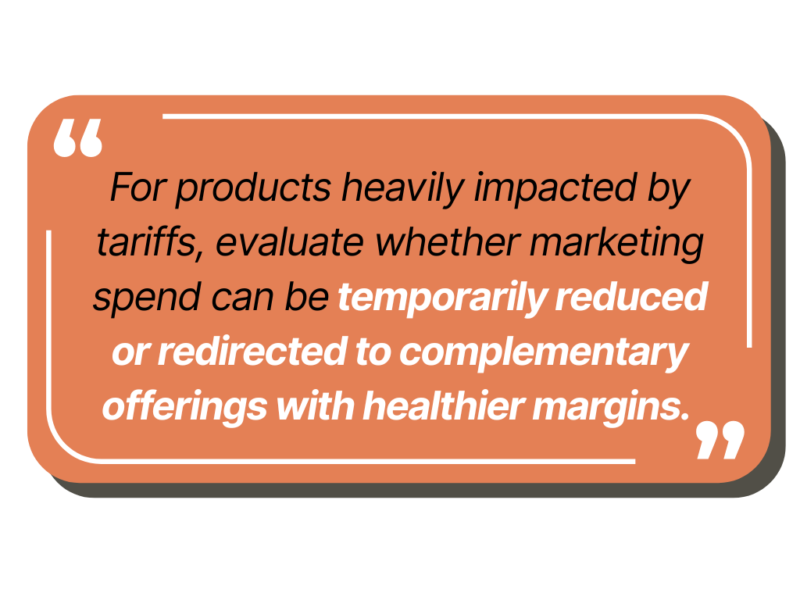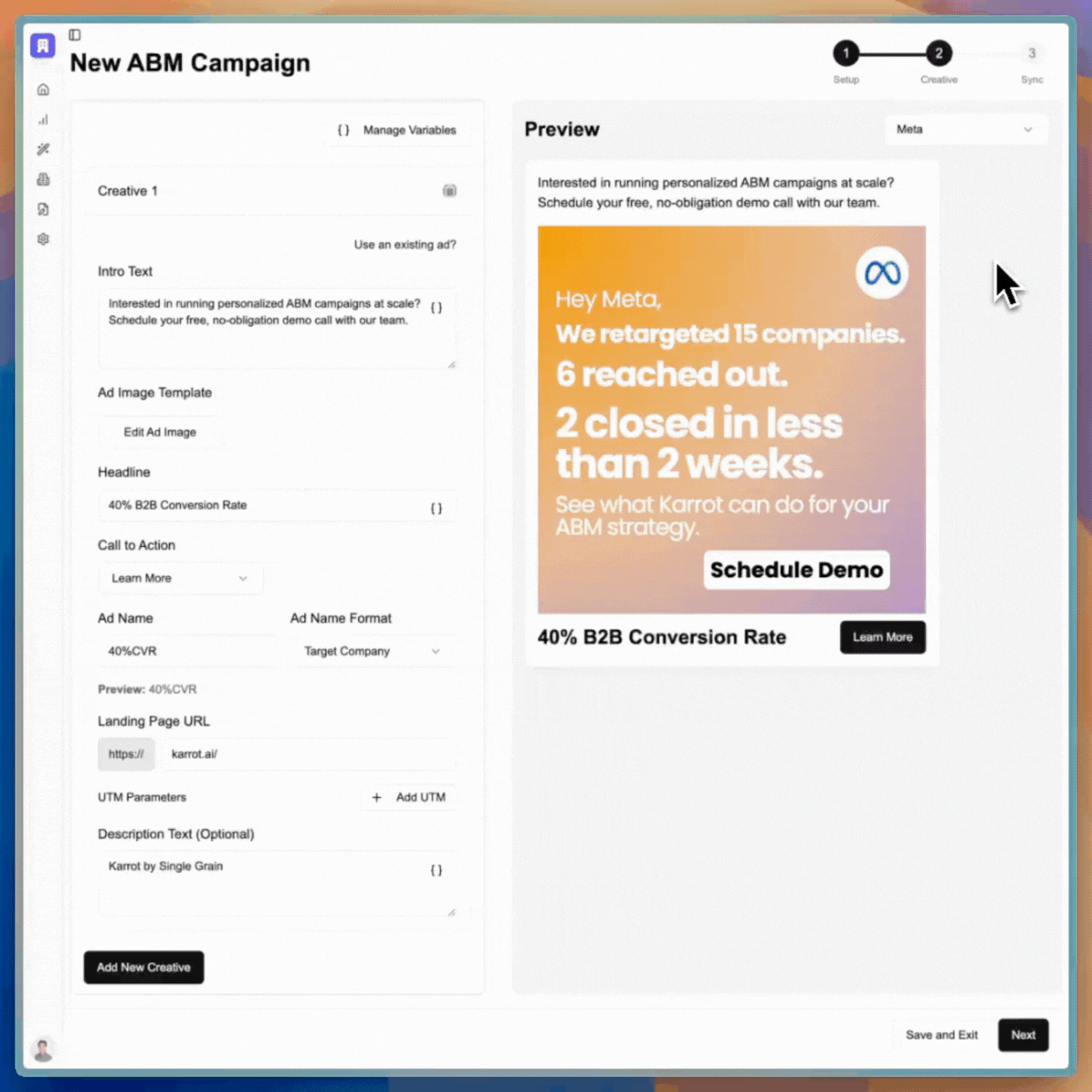How to Mitigate the Tariff Impacts on Your Digital Marketing Spend
Description
In the wake of sweeping tariff changes implemented in April 2025, digital marketers are challenges to maintain performance while protecting margins. With a 10% baseline tariff now applied to all imported goods and China-specific rates soaring to 125%, businesses across industries are feeling the squeeze. According to a recent Interactive Advertising Bureau survey, 94% of advertisers are concerned about how these tariffs will impact their marketing budgets. But economic disruption also creates opportunity for agile marketers who can adapt quickly and strategically.
Key Highlights
- Strategic Reallocation: Shift budget from broad campaigns to high-margin products less affected by tariffs
- Data-Driven Decisions: Use analytics to identify which channels deliver the best ROI during economic uncertainty
- Efficiency Focus: Prioritize conversion rate optimization over acquisition to maximize existing traffic value
- Content Investment: Double down on owned media channels that deliver 3x the leads per dollar compared to paid search
- Contrarian Opportunity: Consider maintaining or increasing spend in select channels while competitors retreat
TABLE OF CONTENTS:
- Understanding the Tariff Impact on Digital Marketing
- Immediate Response Strategies (First 30 Days)
- Budget Reallocation Tactics
- Channel Optimization Strategies
- Content and Messaging Pivots
- Leveraging Owned and Earned Media
- Customer Retention Focus
- The Contrarian Approach: Strategic Investment
- Implementation Roadmap and Timeline
- Looking Forward
Understanding the Tariff Impact on Digital Marketing
The April 2025 tariff implementation has created a complex landscape for marketers. Beyond the 10% baseline tariff on all imports, specific industries face varying levels of impact. According to retail industry analyst Bryan Gildenberg, “Categories are all over the map – toys and games are the highest tariffed and highest import percent category by far,” noting that discretionary purchases are particularly vulnerable to consumer hesitation.
This economic pressure is already reshaping digital marketing budgets. The IAB survey reveals that social media (41%), gaming (24%), and linear TV (24%) are experiencing the most significant cuts, while Connected TV appears more insulated with only 12% of advertisers planning reductions.
For many businesses, the immediate response has been defensive. According to RSM’s research, advertisers are implementing several strategies to address financial constraints:
- Reducing overall ad spend (45%)
- Increasing focus on performance-based campaigns (35%)
- Shifting to digital channels with better measurement (29%)
- Adjusting campaign messaging (28%)
- Negotiating more flexibility (21%)
However, these challenges also present strategic opportunities for marketers willing to take a more nuanced approach.
Immediate Response Strategies (First 30 Days)
The first month after tariff implementation is critical for stabilizing your marketing performance. Begin with a comprehensive SKU-level tariff exposure analysis to identify which products in your portfolio are most vulnerable to margin compression.
“Audit SKU-level tariff exposure (10–34% increases), starting with top-velocity items,” advises e-commerce recruitment specialist Harry Joiner, who recommends “re-forecasting post-tariff contribution margin by channel.” This data-driven approach allows you to make informed decisions about where to maintain, increase, or reduce marketing investment.
While many competitors may instinctively slash budgets across the board, consider holding steady on your highest-performing channels. As digital marketing expert Dana Forman notes, “If others pull back, you may gain share at a lower CPC.” This counter-cyclical approach requires courage but can yield significant market share gains when competitors retreat.
For your paid search and social campaigns, prepare for auction volatility by adjusting your ROAS targets to account for increased costs. This might mean accepting temporarily lower returns while the market stabilizes, or shifting budget to products with healthier margins.
Budget Reallocation Tactics
Rather than implementing across-the-board cuts, successful marketers are taking a surgical approach to budget reallocation. The key is shifting from growth-focused to efficiency-focused advertising strategies.
Reserve your advertising inventory “for known winners and margin accretive products” while deprioritizing broad brand campaigns during this period of adjustment, suggests Joiner. This reprioritization ensures that your limited marketing dollars are working hardest where they can generate the most efficient returns.
Consider implementing a flexible budget model that allows for quick pivots based on performance data. Set aside a portion of your budget (10-15%) as a “response fund” that can be deployed opportunistically when you identify channels or products performing above expectations despite the challenging environment.
For products heavily impacted by tariffs, evaluate whether marketing spend can be temporarily reduced or redirected to complementary offerings with healthier margins. This doesn’t mean abandoning these products entirely, but rather adjusting their prominence in your marketing mix until pricing strategies can be recalibrated.

Channel Optimization Strategies
The tariff environment creates an opportunity to reevaluate your channel mix with fresh eyes. According to RSM’s research, 29% of advertisers are shifting to digital channels with better measurement capabilities—a smart move when every marketing dollar must demonstrate clear returns.
If your business has relied primarily on Google Ads and Facebook for paid lead generation, now is the time to explore alternatives. Connected TV advertising is showing resilience in this environment, with only 12% of advertisers planning cuts compared to 41% for social media. This precision-targeting channel allows for more granular audience segmentation and measurable outcomes.
For B2B marketers, platforms like LinkedIn offer highly targeted reach, while industry-specific platforms can provide access to niche audiences at lower costs. Tools like Karrot.ai can help transform your LinkedIn ads with 1-1 personalized messaging that converts more effectively—exactly what’s needed when budgets are under pressure.

Watch for CPC drops as competitors pull back s





